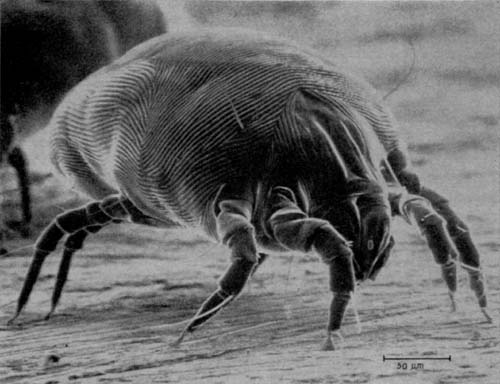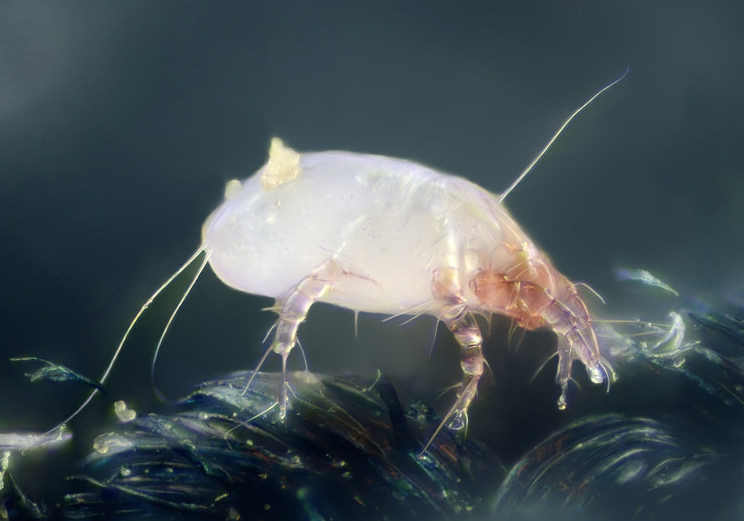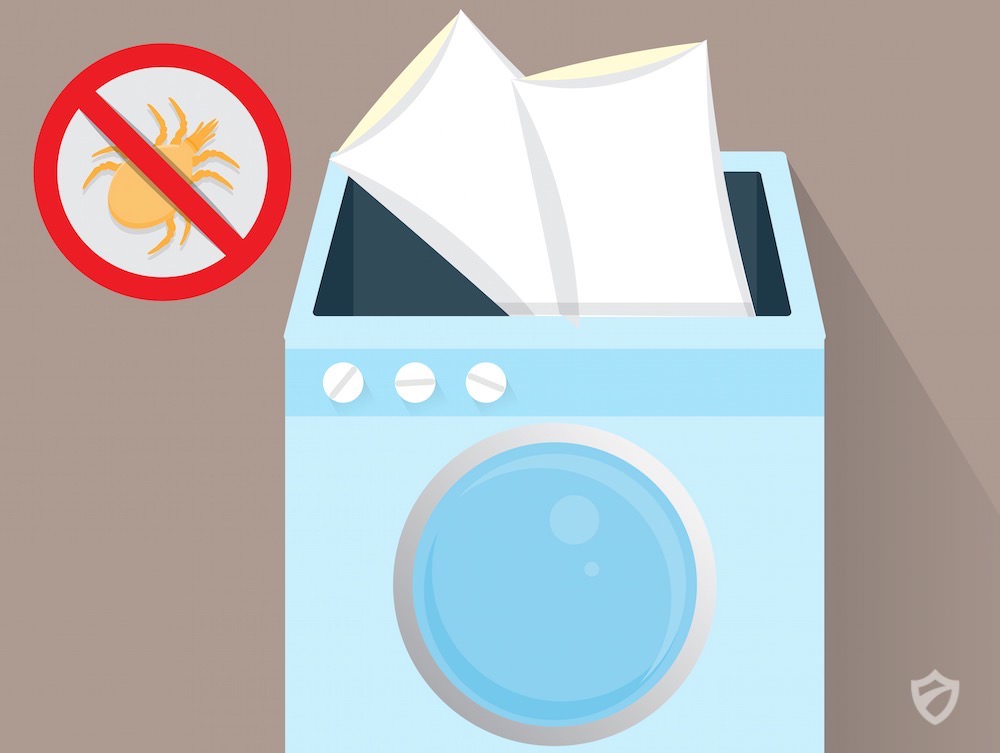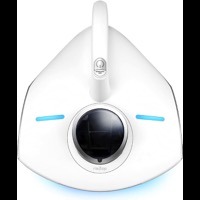Getting rid of dust mites
The Ultimate Guide to Understanding and Destroying Dust Mites

By Jess Simmonds, Expert Reviewer for Repellent Guide
published: Aug 01, 2017 | updated: Aug 01, 2017
How do you fight an enemy you can't see? For many people struggling with allergies and asthma, the common dust mite is a formidable foe; this tiny creature—invisible to the naked eye—can leave people feeling like they have an endless illness, one that may prove dangerous to especially sensitive individuals. This issue is likewise far from rare; a full 20 million people in America alone are allergic to these little bugs, and they are found in approximately four out of five homes in the United States. Fortunately, with the right application of knowledge and strategy, one can effectively eliminate the vast majority of these pests from the home and live a comfortable, symptom-free life.
Understanding Dust Mites
What are dust mites?
Dust mites are a type of tiny spider from the pyroglyphid family that live in human habitations, where they feed on organic detritus, such as human and animal dander, food particles, mold, and so on. There are a few varieties of dust mite, such as the European house dust mite (Dermatophagoides pteronyssinus), the American house dust mite (Dermatophagoides farinae), and a third species, Euroglyphus maynei, which also occurs widely. These names are somewhat misleading, however; dust mites are not limited to either Europe or North America, and the various species are found in many places throughout the world.
All types of dust mite reproduce rapidly; adult females lay up to 40 to 80 eggs singly or in small groups of three to five. These eggs soon hatch, and a six-legged larva emerges; it goes through a series of molts before turning into an eight-legged adult. The entire life cycle from egg to adult takes just one month or less, and the mite will go on to live for another three months. Each dust mite produces at least 20 droppings per day.
Dust mites prefer to live in hot, damp environments; as such, the highest mite densities (which may reach or even exceed 100,000 mites per one square yard of carpet) occur in the humid summer months and the lowest occur in drier winter periods. Dust mites are found in very high numbers in humid lowland regions and are relatively few in number in areas of high altitude and/or dry climate.
Dust mites are related to scabies mites, but they do not bite humans nor burrow under the skin. They are also fundamentally different from bed bugs: Bed bugs are far larger, growing to about the size of an apple seed, and feed on human blood, causing a plethora of itchy bites. Bed bugs, while very annoying, are actually harmless; the tiny dust mite causes a far greater impact to human health.

Assessing Your Home's Risk of Dust Mites
The most obvious sign of dust mites is dust—the overwhelming majority of dusty homes are heavily infested with mites. The second most obvious sign is a physical reaction to those mites, in the form of coughing, sneezing, a runny nose, and other allergic symptoms.
However, neither of these signs are enough to prove the existence of dust mites in a home; dust can be comprised of many substances other than mites, and allergic symptoms can be caused by any number of allergens that may be present in the indoor environment.
As such, you will need to look at a range of other factors, including:
The temperature and humidity in the home. As stated above, dust mites require a warm, damp environment in order to thrive. If your home is cool and dry, chances are mites are not the root cause of your symptoms. Dust mites require that homes be between 75-80 degrees Fahrenheit, and they usually need at least 70% humidity. If humidity gets below 50-60% and stays there, studies suggest that most mite populations will die out within months.
The age of the furniture and carpeting in the home. Dust mites habitually live in carpeting, furniture, and pillows that have accumulated human and animal dander over the span of years; mattresses, for example, may contain anywhere from 100,000 to 10 million mites inside them after 3-5 years, and often ten percent of the weight of a two year old pillow is composed of dead mites and their droppings. If you seldom replace your furniture and pillows and seldom have your carpet cleaned professionally, your home is far more likely to be infested with mites—especially given the fact that the heat and moisture of our bodies make our beds and pillows an ideal environment for them, even in homes with conditions not otherwise mite-friendly.
If you suspect your home is infested with mites, you can purchase a microscope and confirm their presence; you will need a device that is capable of at least 10x magnification, but these are fairly easy to locate at hobby supply stores and even many toy stores. Collect a dust sample from the warmest and dampest area of your home and examine it under the microscope; chances are good that you will either see mites—eight-legged, translucent insects—or their droppings, which show up as small brown rectangular pellets.
If you discover that your home has dust mites, the final step is to take an allergy test to confirm that they are indeed what is causing your symptoms.
Dust Mites and Human Health Issues
Many people are shocked to discover that such a tiny pest can cause such big problems, but the secret to dust mites' disruptive power lies in their aforementioned tendency to produce a very high volume of waste for their size. The dust mite's gut contains potent digestive enzymes (notably proteases) which wind up in their feces, and which are potently allergenic to humans, capable of producing extreme symptoms such as wheezing. In addition to this, the dust mite's exoskeleton—which is left behind when the insect dies—can also contribute to allergic reactions. Due to this capability to irritate the respiratory system, dust mites are a factor in between 50 to 80 percent of all cases of chronic asthma.
According to the Mayo Clinic, WebMD and NIH, the typical symptoms of an allergy to dust mites are as follows; you may experience all of them, or just some of them:
- Hay fever
- Rhinitis (chronic runny nose)
- Frequent Sneezing
- Asthma and difficulty breathing
- Eczema
- Itchy, red or watery eyes, particularly upon waking in the morning
- Nasal congestion
- Itchy nose, roof of mouth, or throat
- Postnasal drip
- A cough, which may develop into bronchitis
- Facial pressure and pain
- Poor sleep quality due to frequent awakening (symptoms are often particularly severe while a person is in bed)
- Swollen, blue-colored skin under the eyes
- In children, frequent upward rubbing of the nose
Treatment: Eradicating Dust Mites
While medication can help to control the above symptoms, that solution is not often ideal; instead, one should focus on eradicating dust mites from one's home. A number of researchers, such as those at the University of Nebraska, have studied dust mite control and found that there are a number of things homeowners can do to reduce the presence of dust in the home, and as such, greatly reduce the number of mites. This “dust reduction” strategy carries the added benefit of reducing other dust-borne allergens as well, such as mold and pet dander.
While the job can be challenging, it's usually possible to eliminate the overwhelming majority of mites in your home through the following techniques:
Out with the old!
If you haven't done so already, purchase a new mattress and set of pillows, and then protect them from mite infestation. This can be done by enclosing the mattress top and sides with a plastic cover or, if plastic is too irritating (it causes some people to sweat at night), use an alternative, like dust mite-proof fitted sheets. These special fitted sheets, which are made of microfiber, help to prevent the accumulation of human skin scales on the surface of your mattress, depriving dust mites of their favorite food source. These sheets are also waterproof, so they will prevent moisture from entering the mattress. Mite-proof pillow covers are available as well. (Be sure to thoroughly vacuum your mattress and the base of the bed before applying the cover of your choice.) Many people get a great deal of relief from just following this one procedure, as it is in our beds that we are closest to dust mites and their droppings, and it's there that we continually breathe them in for hours at a time.
Air your bedding
If you're not able to cover your mattress and pillows, a study conducted in 2005 by Kingston University in the UK showed that simply by leaving your bed unmade each morning, so that the sheets are exposed to air all day long and thus allowed to dry out, you can substantially reduce the numbers of dust mites living in your mattress. (This technique may be less effective in very humid homes, however; see the next point for tips on how to combat dampness in the surrounding environment.)
Reduce humidity
Reduce temperature and humidity within the home. As mentioned previously, dust mites thrive in warm, humid conditions; to really eliminate them from all areas of your home, you should make sure the temperature hovers around 70 Fahrenheit and 50% or less humidity. While it is believed that dust mites generally begin to die off around the 60% humidity level, The National Institute of Health suggests that for optimal control of mites, the home's relative humidity should be maintained below 50 percent. This, of course, requires the purchase of a one or more dehumidifiers; generally the larger, more expensive models are believed to be the most effective and the most durable, often lasting many years. In the summer, when heat and humidity are high, you should be sure to use central air conditioning, and in the winter, forgo the use of humidifiers (if you rely on them to combat winter-induced dry skin, try showering and moisturizing immediately afterward instead, sealing the moisture in with Vaseline). If you absolutely must use a humidifier in the winter, adjust it to produce 35% to 45% humidity—use a humidity gauge to make sure you are not over-humidifying your home.
Wash your linen
Wash your sheets, pillows, and blankets in extremely hot water. Like most insects, dust mites cannot survive very high temperatures. As such, you should be sure to wash your sheets, pillows, and blankets once a week (pillows may be excepted if they have dust mite-proof covers on them, but you should still wash the fabric pillowcase that goes over the cover) in water that is at least 130°F. Be sure to test how hot the water feels when you set your washing machine to it's hottest setting; if it doesn't feel very hot, head down to the basement and check your hot water heater, as it may need to be adjusted to a higher setting. If you have any bed linens that cannot be washed at such a high temperature, put them in the freezer for 24-48 hours, as this is also an effective way to kill mites (wash the linens afterward in order to remove any mite residue, as freezing will not get rid of their droppings or exoskeletons).

Go synthetic
Choose synthetic fabrics. As much as most of us love all-natural products, they unfortunately create the ideal home for organic pests like dust mites. As such, you should replace feather and down pillows with pillows that contain synthetic fillings, make sure your blankets are made with nylon or cotton cellulose rather than wool or organic cotton, and ensure that any stuffed animals you or your children have are washable. Memory foam may provide an excellent alternative material for mattresses and pillows; according to mattress manufacturers, memory foam creates an environment that is unfavorable to dust mites (it's a good idea to use a mattress and pillow cover regardless, as this claim has not yet been extensively researched).
Clean regularly
Clean your bedroom thoroughly and often. In addition to changing the pillowcases, sheets, and blankets once per week, you should vacuum around the base of your bed, dust all surfaces, and damp-mop any flooring (or vacuum the carpeting). If you have a mattress cover, try to damp dust it each day. Likewise, don't forget to wash your curtains fairly regularly, or replace them with a set of blinds.
Remove carpets
Wherever possible, remove carpeting and install laminate flooring, hardwood flooring, tile, linoleum, or vinyl floor covering. Carpets are an absolute haven for dust mites, and vacuuming doesn't effectively remove all of them (though vacuums with high-efficiency filters will make a worthwhile dent in their numbers), so it's best to install hard flooring throughout the home. If you truly wish to feel something soft underfoot, place washable rugs over the flooring and be sure to wash them twice per month at a temperature of at least 130 degrees Fahrenheit as well.
 If you cannot remove the carpeting from your home, make sure to have it professionally steam cleaned at least once or twice a year; the extremely hot water used by commercial-grade steam cleaners should be sufficient to kill dust mites, and their droppings will be effectively removed as well.
If you cannot remove the carpeting from your home, make sure to have it professionally steam cleaned at least once or twice a year; the extremely hot water used by commercial-grade steam cleaners should be sufficient to kill dust mites, and their droppings will be effectively removed as well. Use air purifiers
Install air purifiers in the home. While air purifiers will not stop dust mites on their own, they do help to remove them from the air, which is an effective secondary measure when applied after taking the steps above. For best results, look to a pest control firm near you—they often sell air purifiers that are specifically designed to eliminate the food sources that dust mites rely on. Air filters with HEPA filtration in particular can remove up to 99 percent of all dust material, including not only dust mites and their droppings, but also other allergens, like animal dander, dust, pollen, mold, etc. In the winter, replace furnace air filters at least once a month. Likewise, you should invest in filters that are specifically designed to trap allergens.
As a final note, you can maximize the efficacy of these dust-reduction strategies by observing generally cleanly habits; don't eat in front of the television or anywhere other than the kitchen, sweep all floors, dust frequently, don't let laundry pile up, etc. It's also a good idea to clean with cleaners that target dust mites, such as X-mite powder, which removes dust mites and mold allergens while cleaning carpets, and Dustroy Spray, a liquid formula created to remove mites from upholstered furniture, rugs, carpets and curtains.
Through these proven dust mite elimination techniques, you can take back control of your home—and your life—and kick these invisible yet powerful pests to the curb.


